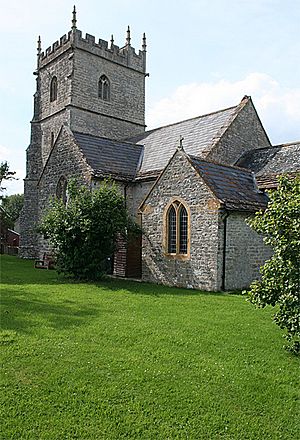Church of St Mary Magdalene, Sparkford facts for kids
Quick facts for kids Church of St Mary Magdalene |
|
|---|---|
 |
|
| Location | Church Road, Sparkford, Somerset, BA22 7JZ England |
|
Listed Building – Grade II*
|
|
| Official name: Church of St Mary Magdalene | |
| Designated | 24 March 1961 |
| Reference no. | 1243352 |
| Lua error in Module:Location_map at line 420: attempt to index field 'wikibase' (a nil value). | |
The Church of St Mary Magdalene is an old church in Sparkford, a village in Somerset, England. It was built a very long time ago, in the 1300s! This church is so special that it's officially protected as a Grade II* listed building, which means it's a really important historical place.
Contents
History of the Church
This church was first built in the 14th century, which means it's over 600 years old! In 1824, parts of the church were fixed up and rebuilt. This process is called "restoration." The main part of the church, called the nave, was rebuilt during this time.
The church is part of a larger group of churches in the area. This group is known as the Cam Vale benefice, and it belongs to the Diocese of Bath and Wells.
Church Design and Features
The Church of St Mary Magdalene is made from stone. It has special decorative stones called hamstone dressings and its roofs are made of slate.
Inside the Church
The church has a main area called the nave, which has three sections or "bays." It also has a chancel, which is the part near the altar, with two bays. There's also a small chapel and a place for the organ on the south side.
The tower of the church has three levels. It has a special top part called an "embattled parapet," which looks a bit like the top of a castle wall. Strong supports called buttresses help hold up the corners of the tower.
Most of the furniture and decorations inside the church are from the 1800s. However, there is an altar table and a pulpit (where the priest gives sermons) that are even older, from the 1600s. You can also find some unusual seats with ends made of cast iron.
Churchyard and Notable People
The churchyard is the burial place of John Godolphin Bennett, a famous thinker and teacher from the 20th century.
See also
- List of ecclesiastical parishes in the Diocese of Bath and Wells

